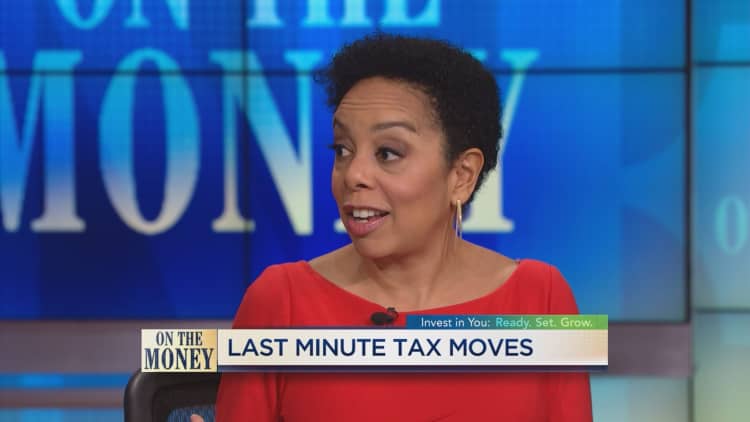If you're more confused than usual filing your tax return this year, you're not alone.
The majority of Americans are struggling with some basic concepts of the new U.S. tax code, according to a study by online investment company Betterment, which surveyed 1,000 people last month.
"Not everyone needs to know down to the penny, but not having a general grasp of their income versus their expenses, is a little bit scary," said Eric Bronnenkant, author of the Betterment report.
What was the biggest misconception following implementation of the Tax Cuts and Jobs Act, the overhaul that passed in December 2017 and went into effect in 2018?
"That everyone's taxes are going to go down," said Bronnenkant. "That's definitely not true."
Here are four key points Americans might misunderstand about the new tax law.
1. You have a new standard deduction

More than 8 of 10 Americans did not know the amount of the standard deduction for single tax filers — it's $12,000 — according to the report.
Prior the new tax law, single tax filers received a standard deduction of $6,350. The bill also raised the standard deduction from $12,700 to $24,000 for married couples.
A higher deduction sounds like a good thing, yet not everyone will reap the benefits.
More from Personal Finance:
IRS giving millions a pass on penalties for underpayment
Here are some savvy moves for that tax refund
6 tax breaks you'll miss on your 2018 return
"If your itemized deductions were $30,000 in 2017, an increase of standard deduction won't help you in the first place, because you were already well over those numbers," said Bronnenkant.
You're also subject to new curbs on itemized deductions, including a $10,000 cap on state and local tax deductions and a new limit on the write-off for mortgage interest.
2. Personal exemptions are gone
Two-thirds of respondents incorrectly said that Americans can claim personal exemptions in 2018.
The new law eliminated the standard $4,050 exemption you can claim for yourself, your spouse and each dependent.
Though taxpayers have lost the exemptions they can claim for their kids, they now have an increased child tax credit. Families can claim a child tax credit of $2,000 per kid under age 17.
3. Individual tax rates are lower

Roughly half of respondents did not know that tax rates for all seven income tax brackets decreased in 2018, as part of the new law.
Prior to the new law, the seven brackets were: 10 percent, 15 percent, 25 percent, 28 percent, 33 percent, 35 percent and 39.6 percent.
Now, the new rates are: 10 percent, 12 percent, 22 percent, 24 percent, 32 percent, 35 percent and 37 percent.
4. State and local income tax deductions are capped
More than 4 out of 10 polled said, wrongly, that the limit on state and local tax deductions was $20,000, Betterment found.
In fact, the correct amount is $10,000. Taxpayers who itemize on their tax returns can now only deduct $10,000 in state and local taxes on their federal returns. In prior years, there was no limit.
Residents in high-tax states such as New York, New Jersey, California and others may see increases in their federal tax bills as a result of this.


